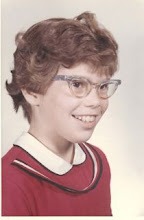 |
| Samantha Steinberg |
Genre Studies Open Doors to New Books
As a second grade teacher, matching books to readers is a big part (and a favorite part) of my job. I love getting to know my students-- their personalities, likes and dislikes, reading level, hobbies, etc—so I can figure out which books, authors, or series to recommend. It is an amazing feeling when my suggestion ends up being the perfect fit for that student at that moment, propelling the reader forward as a result.
In second grade, many readers gravitate toward realistic characters whom they can relate to: Junie B. Jones, that funny “Wimpy Kid,” Ramona Quimby, and Nate the Great. Most children this age love the hilarious exploits of Captain Underpants and the adventures of the Magic Tree House books. Given these typical favorites of the eight year-old set, I was pleasantly surprised this year when our genre study of folktales enthralled and engaged my students in a way I had not anticipated.
Every year prior to writing our own folktales, my class delves into reading lots and lots of folktales and identifying the unique characteristics of this genre. We read many different folktales, compare them, and identify commonalities and differences. Often, I will read several versions of the same folktale to my class, so they can notice how different authors retell the same story, or put their own spin on an old classic, such as in Jon Sciezska’s Stinky Cheese Man (always a huge hit!).
Our genre study of folktales opened the doors to a whole new world of books for my second grade students. The experience made me wonder: If I had not exposed my class to this genre, what wonderful reading experiences would they have missed? Opening up children’s eyes and minds to a new genre, author, or series could be just the hook they need to become life-long readers and book lovers.

Thank you Samantha for sharing your adventures into folktales, and for reminding us that just one step outside our reading comfort zones can be the beginning of an amazing new reading/learning experience!
Thank you Samantha for sharing your adventures into folktales, and for reminding us that just one step outside our reading comfort zones can be the beginning of an amazing new reading/learning experience!




No comments:
Post a Comment